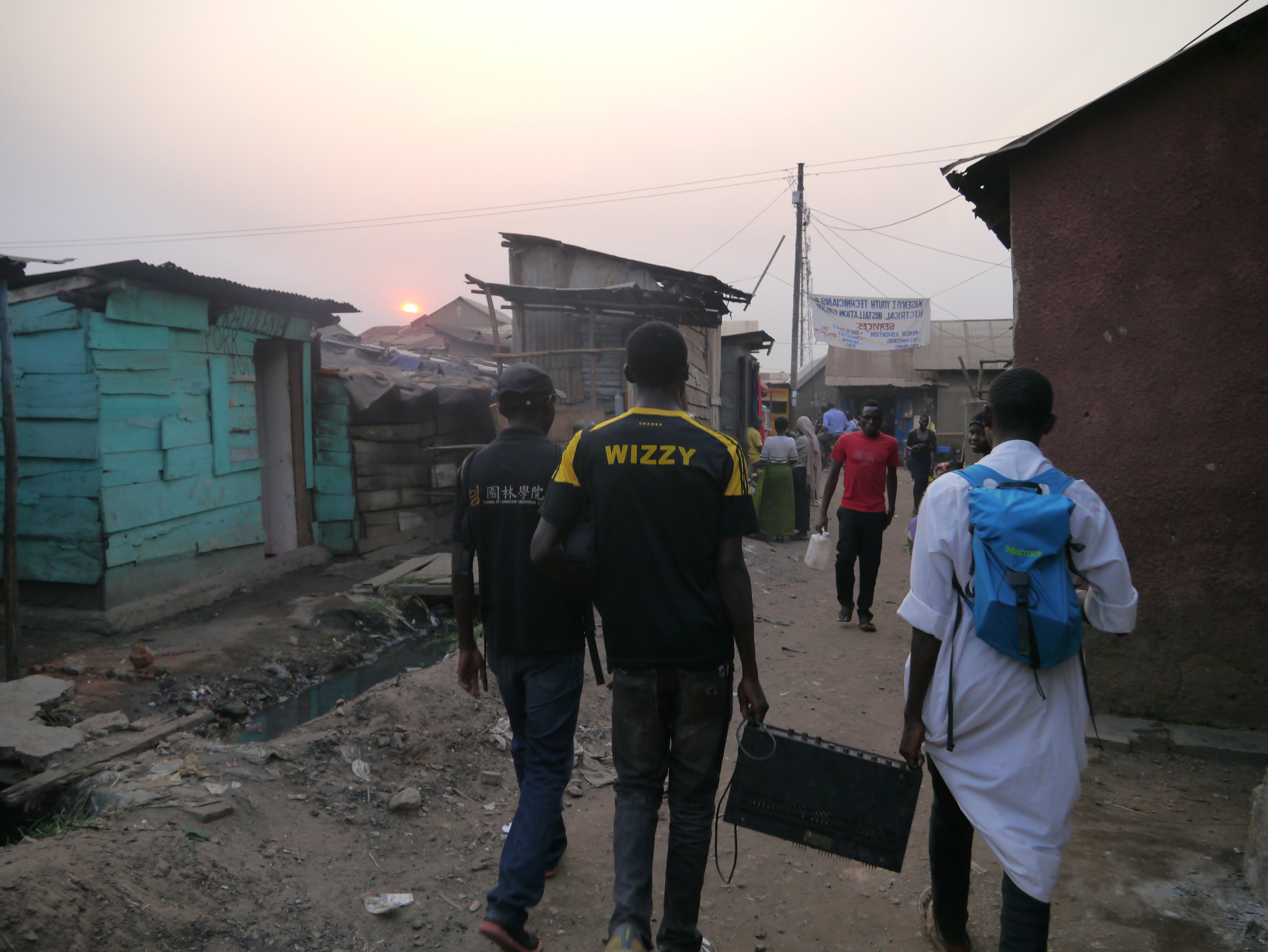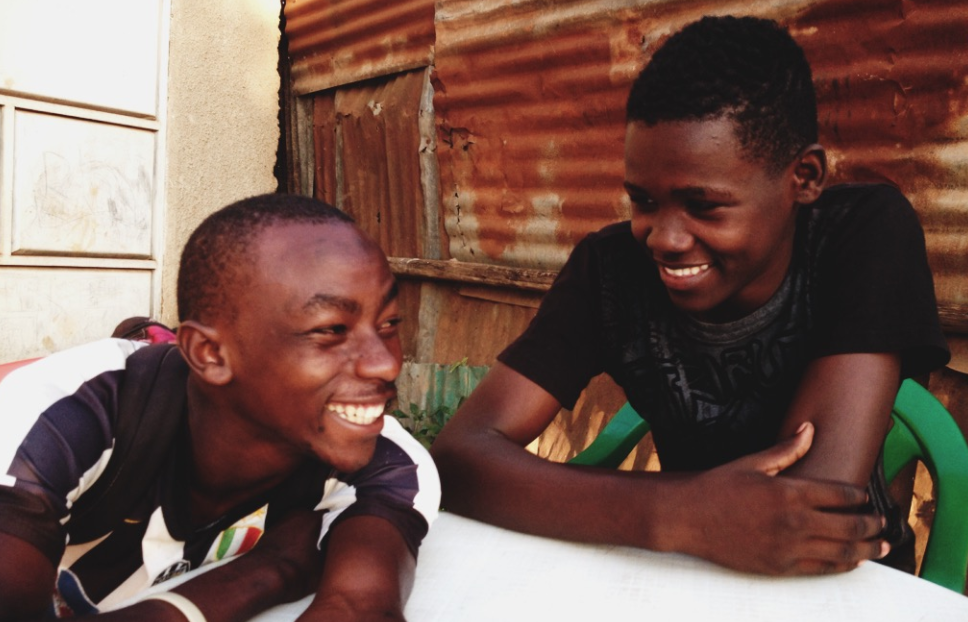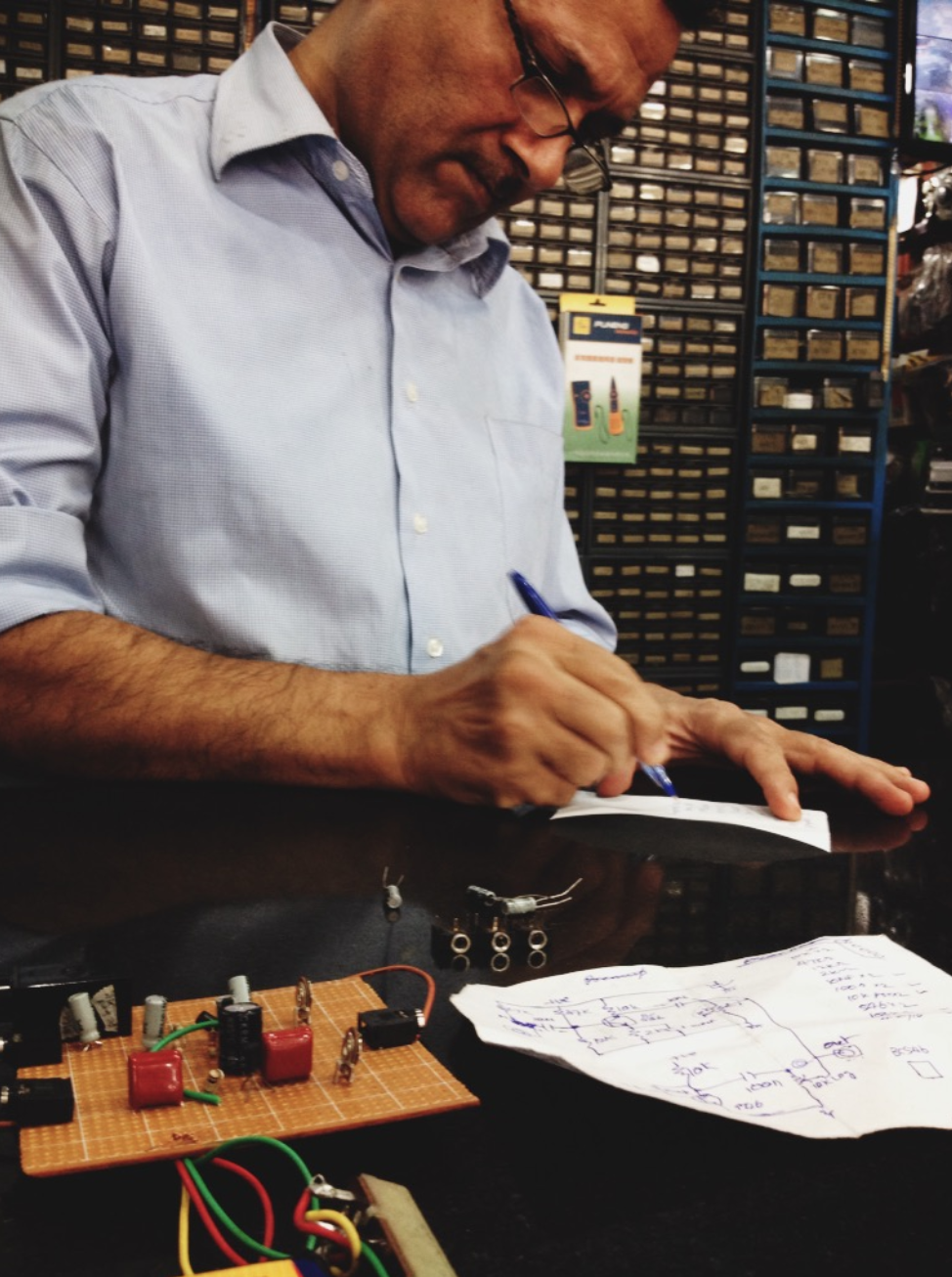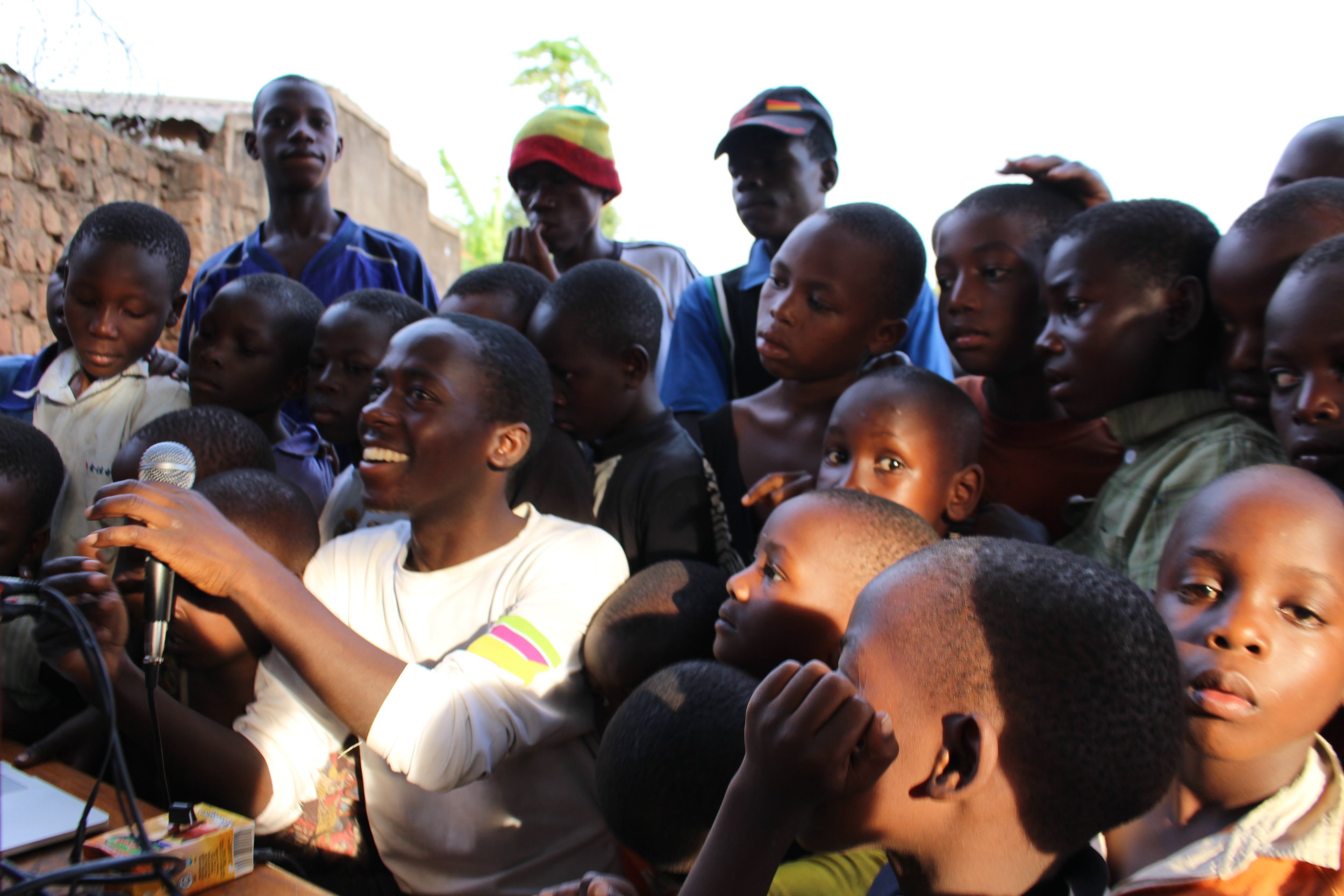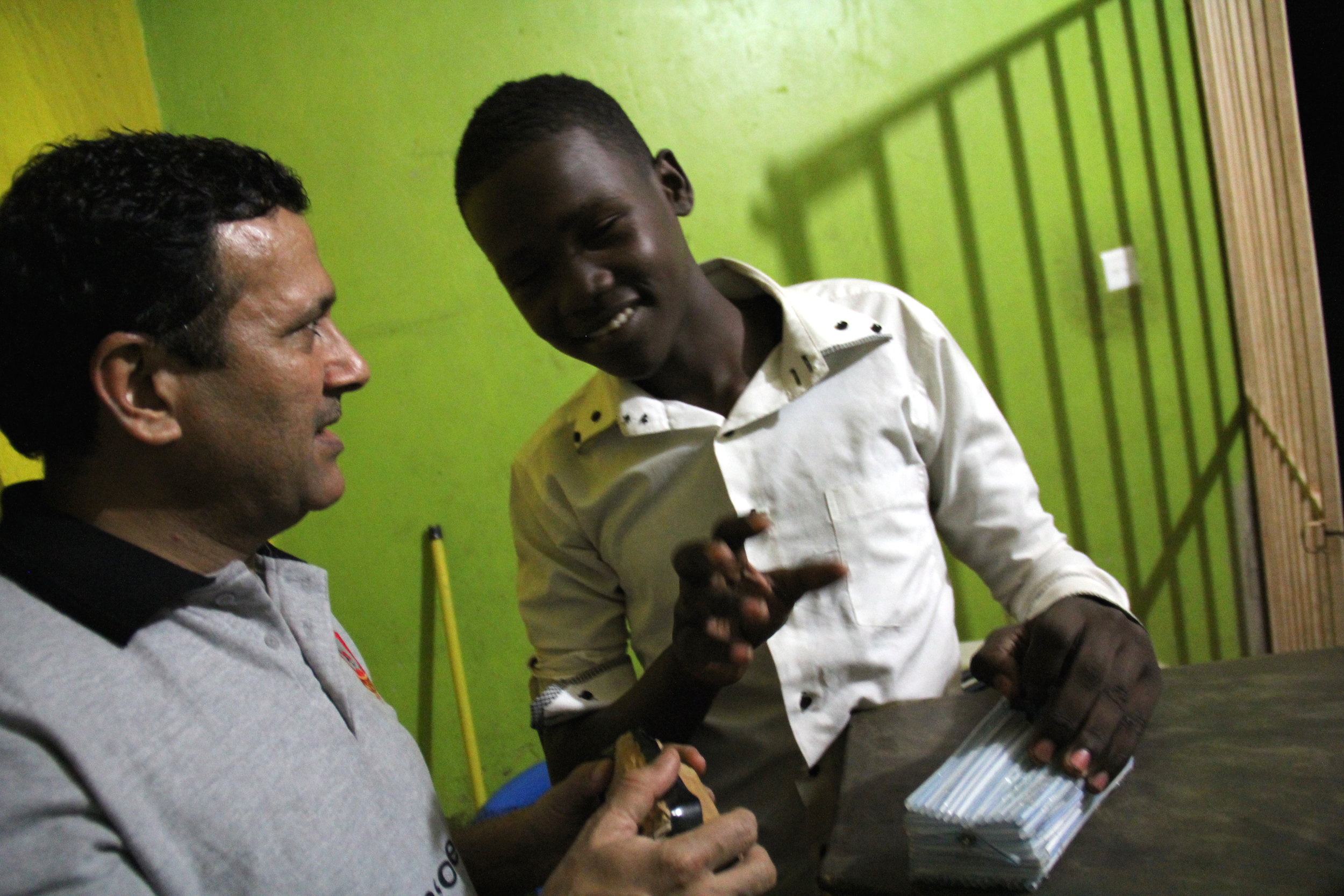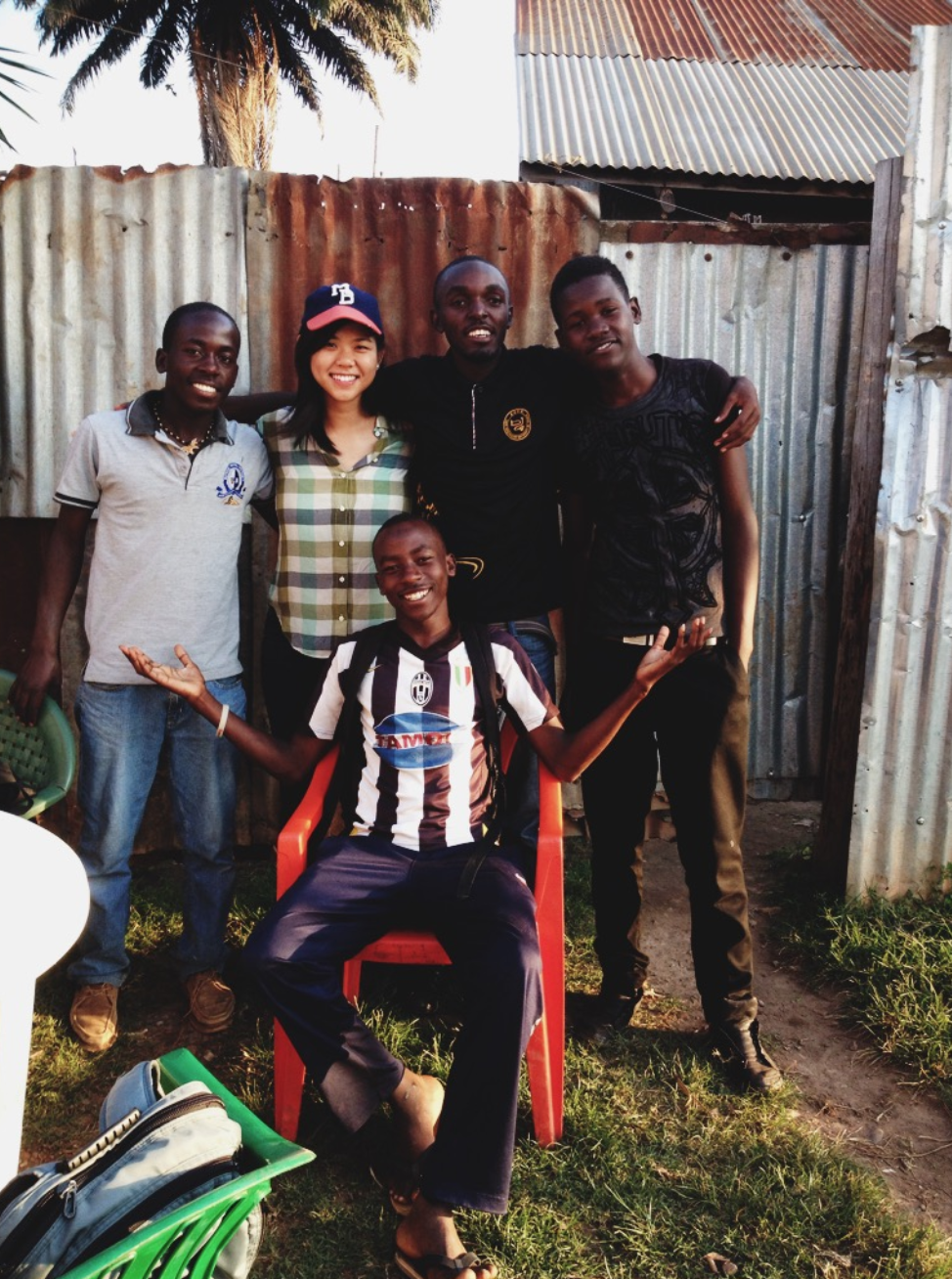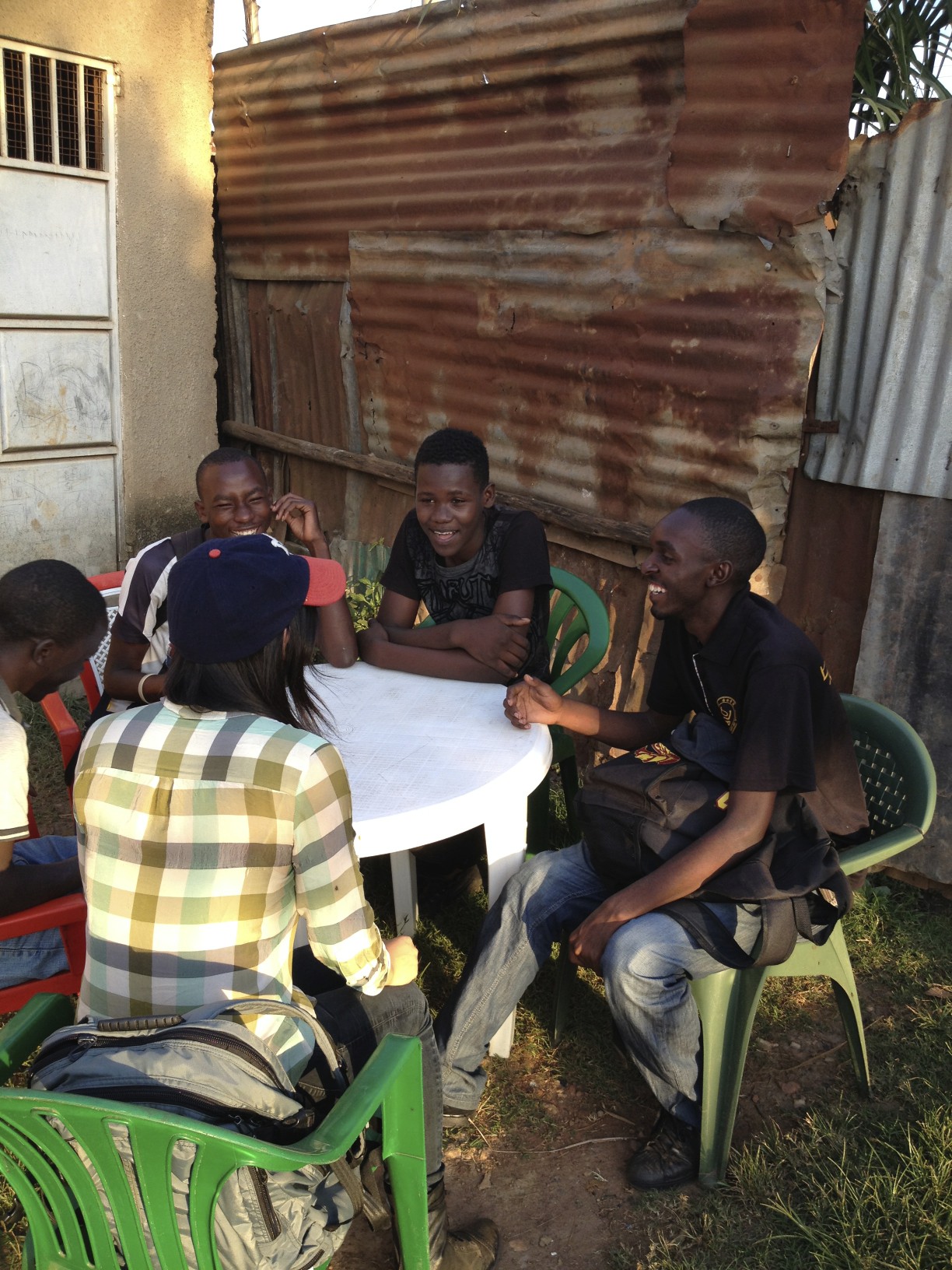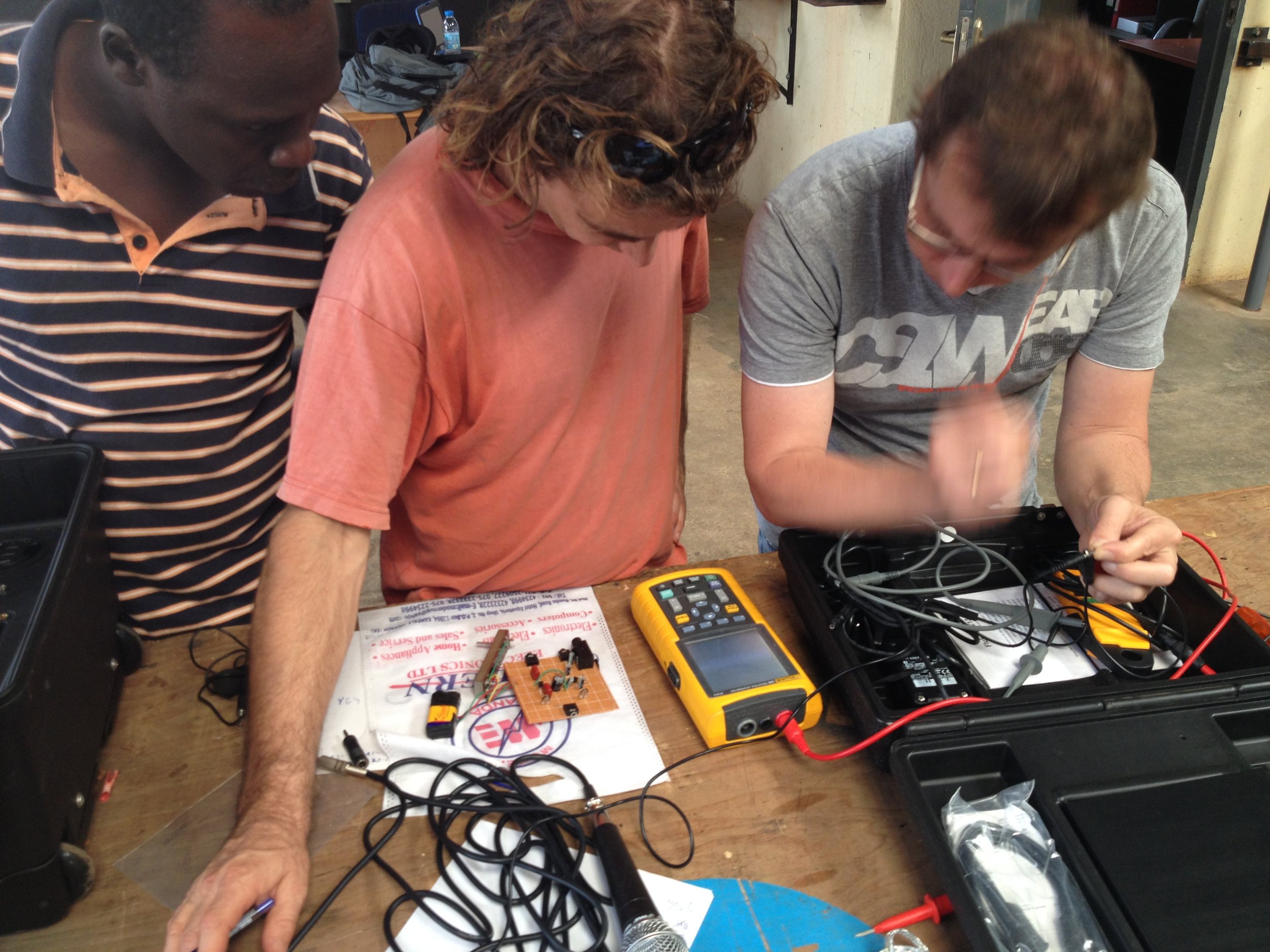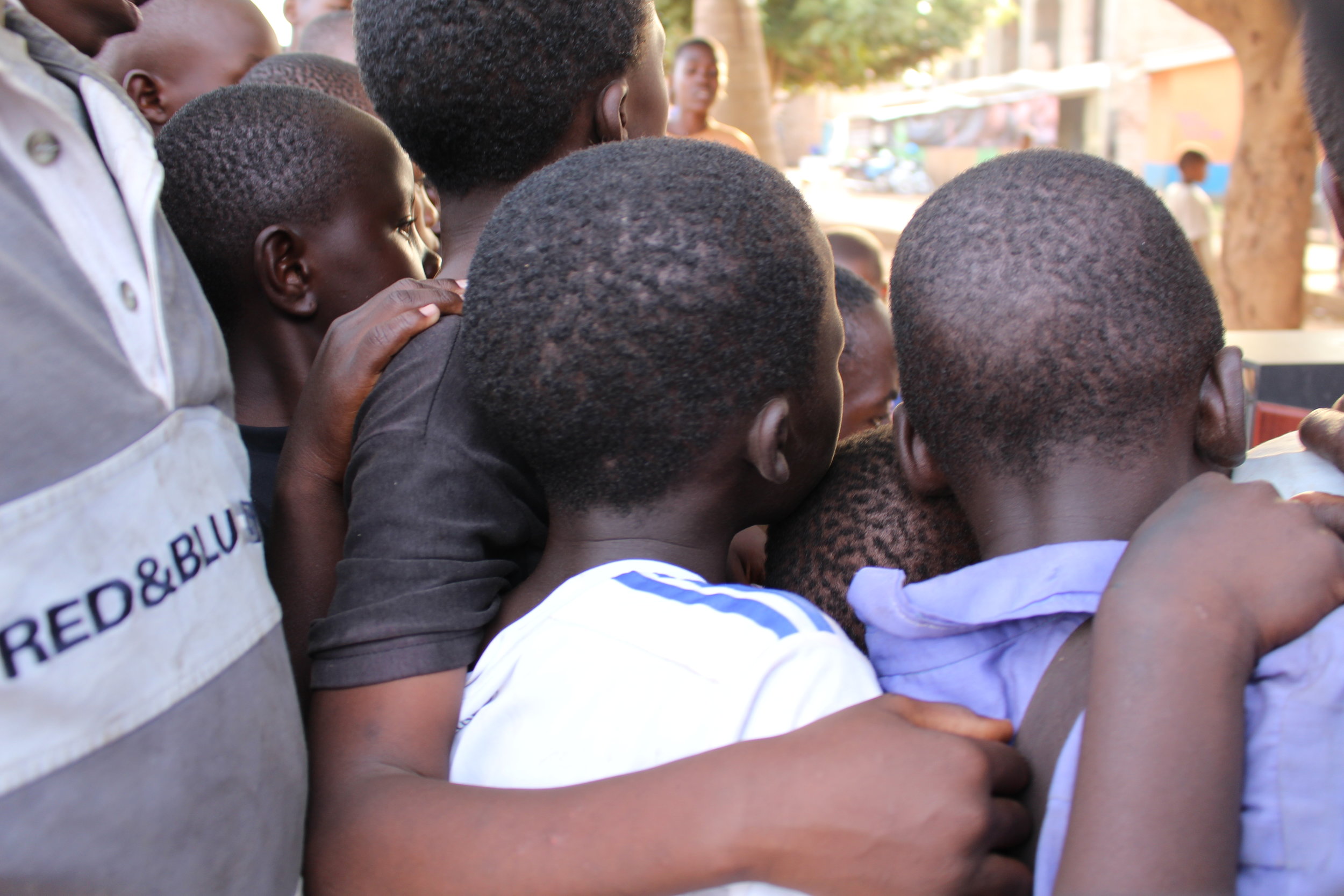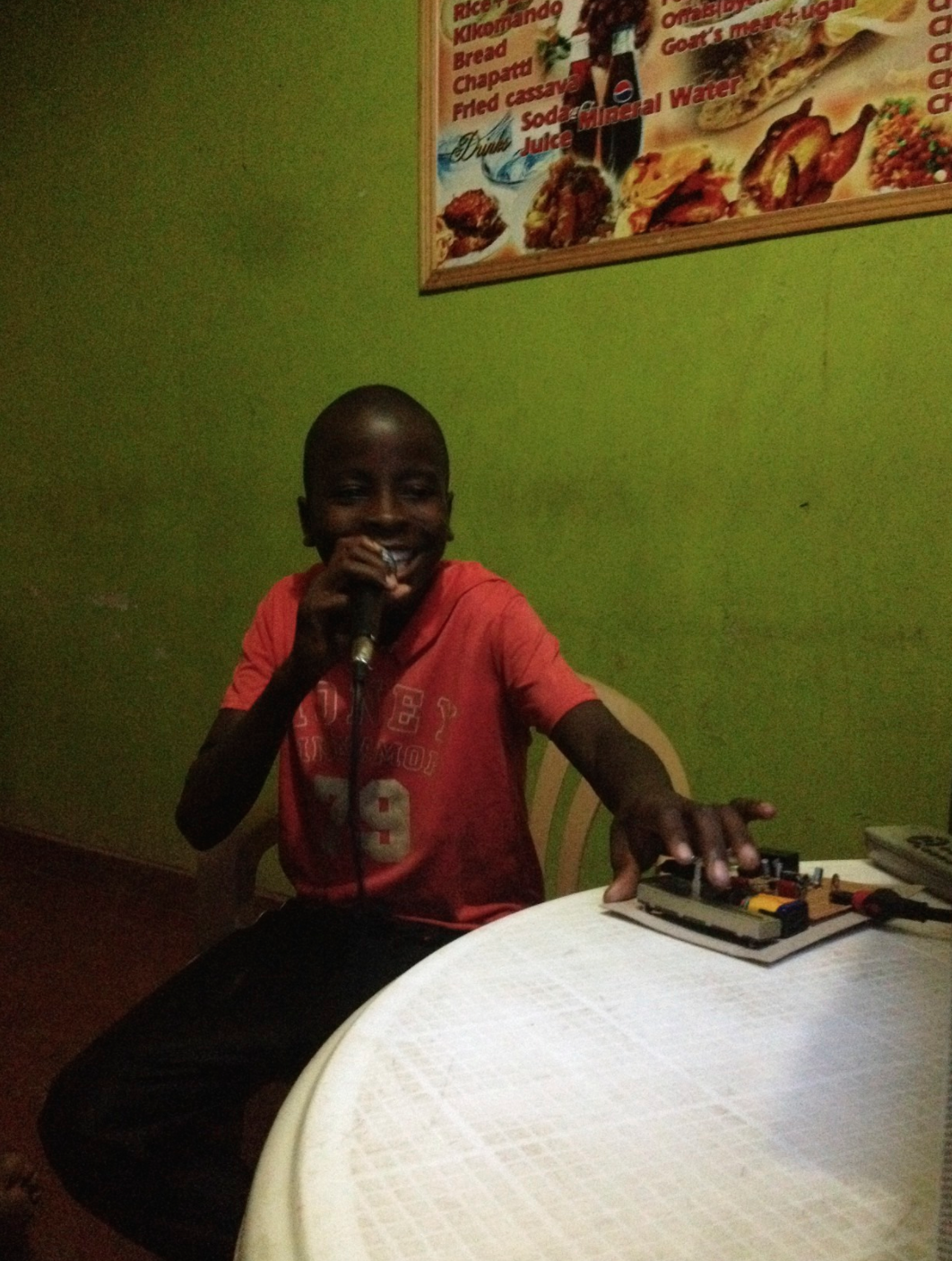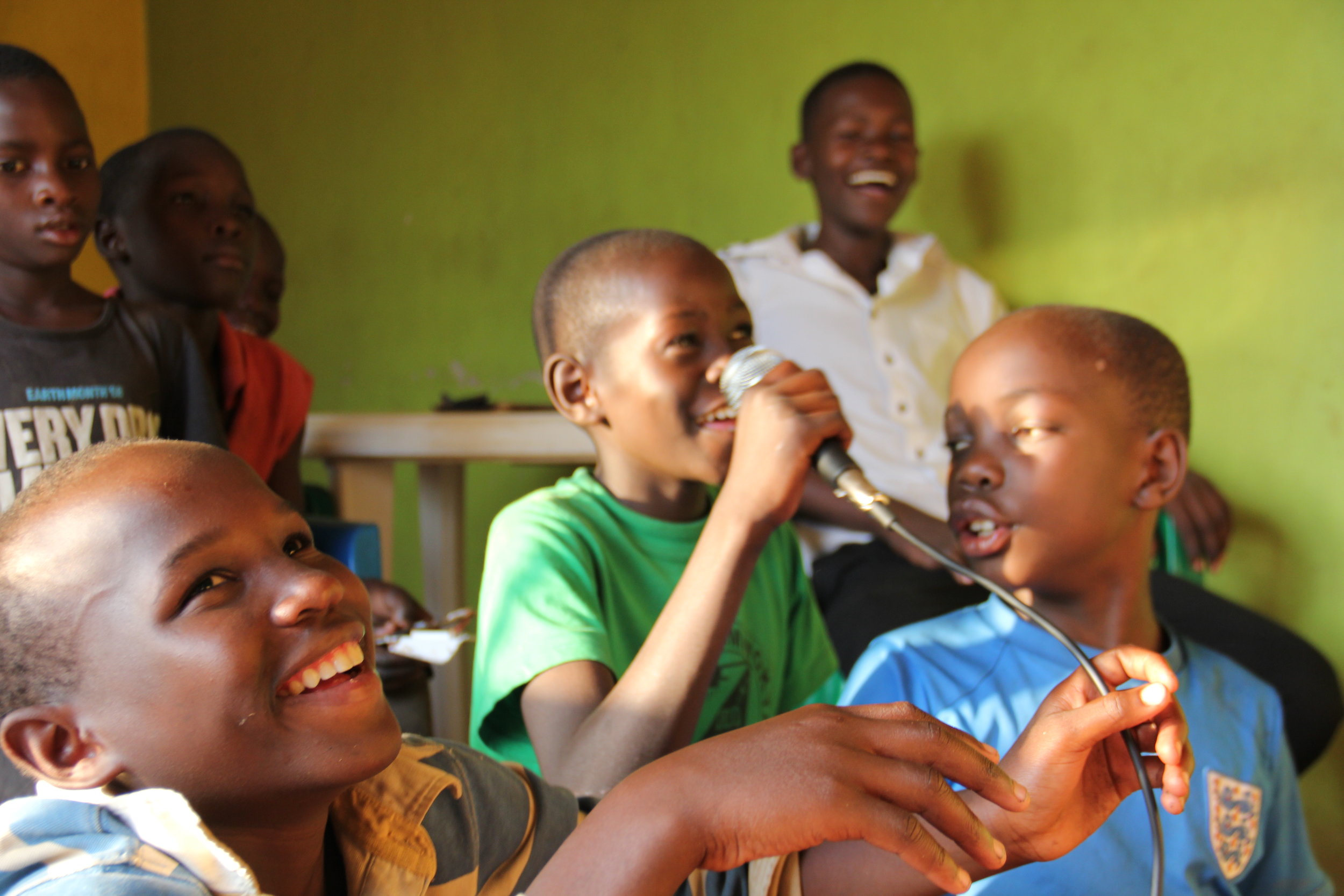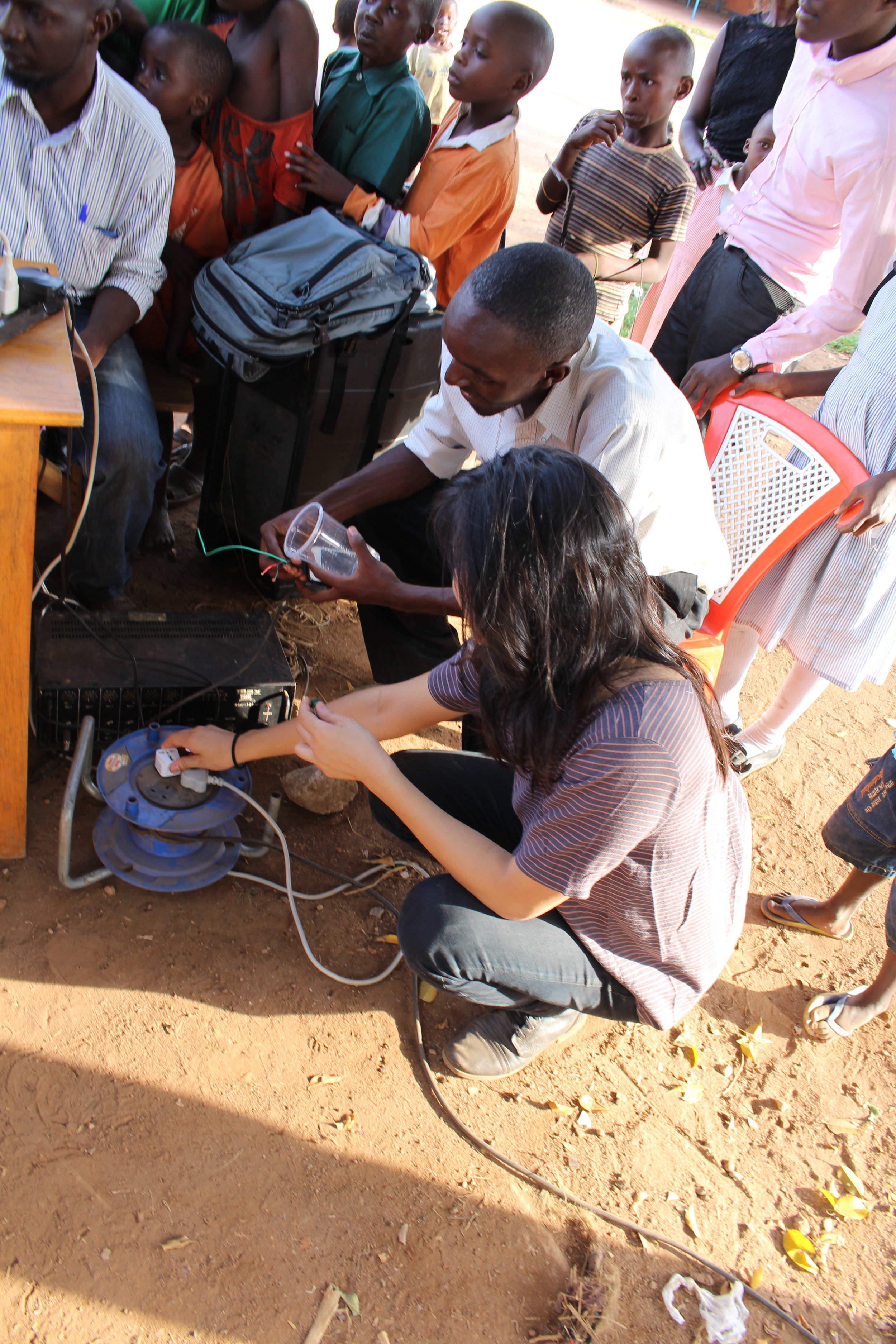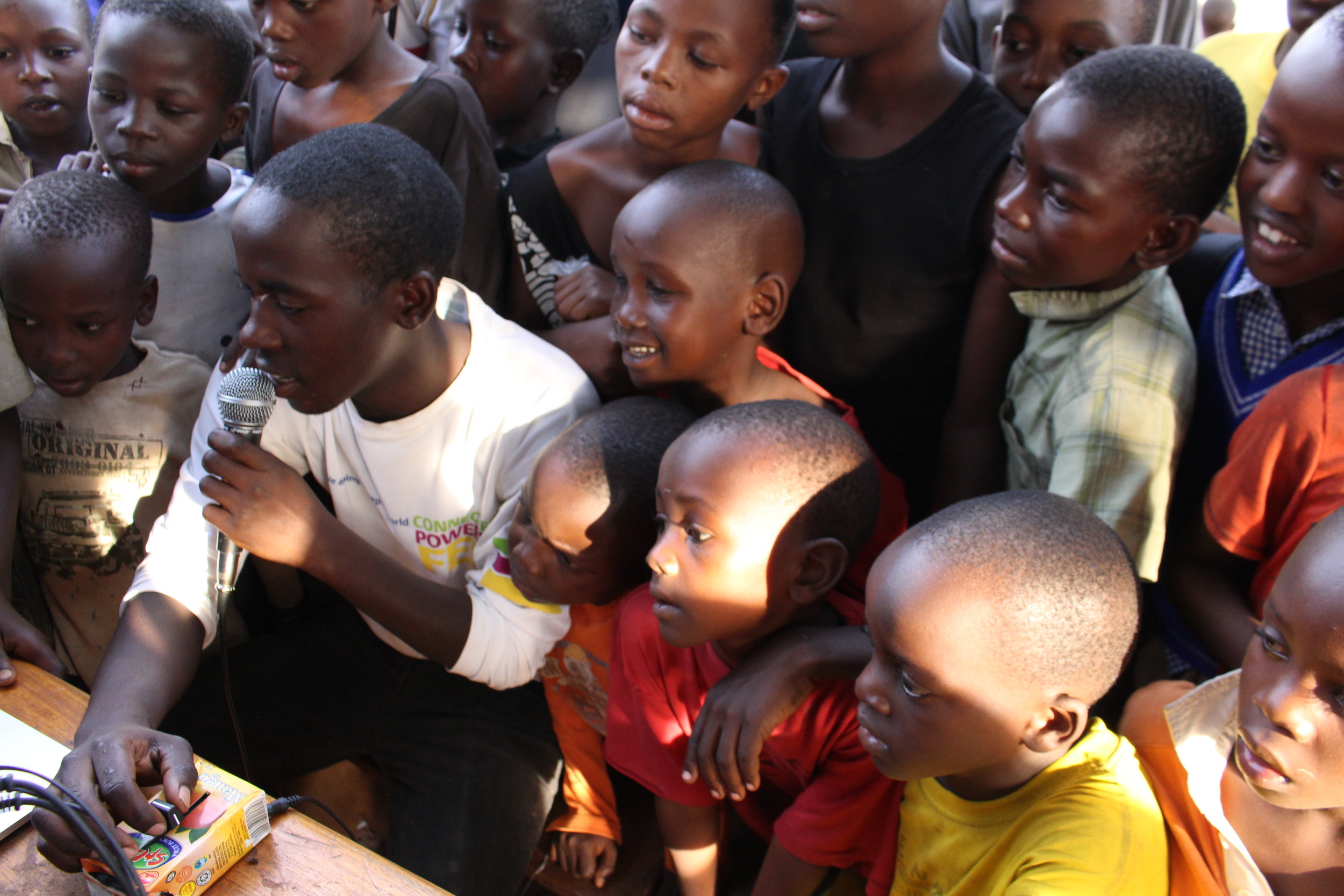The weDub Project
An award-winning graduate thesis that celebrates the teen talent in Kampala, Uganda
The weDub Project is a locally made DIY audio mixer and preamplifier that fits in the palm of your hand.
The DIY electronic circuit is made by teens to perform live improvisations of reinterpreted media to a participatory audience.
―
The weDub Project
As a graduate student studying at Art Center College of Design's Media Design Practices/Field (MDP), I developed The weDub Project over a course of 3 months from on-the-ground research to circuit design to tell a different story of teens in an urban slum in Uganda.
The weDub Project harnesses the abundance of teen talent in the urban slum of Kamwokya. Teens use an audio mixer and preamplifier made from locally sourced electronic components to VJ— a local, cultural phenomenon where the VJ overdubs content with their own flair, jokes, and commentary.
In between trips to Kampala, I utilized time in the studio in Pasadena, CA to reflect, fabricate, and write an academically researched thesis paper to ground my field experiences.
The weDub Project won the Core77 Social Impact student category in 2015. I was named Post-Graduate Fellow, an honor sponsored by Intel. During that time, I was invited to speak at Open Engagement, Google, UNICEF HQ, Nike Girl Effect Studio, and Art Center.
―
The Problem
James Ferguson's work, Global Shadows: Africa in the Neoliberal World Order posed the problem from a political science point of view:
What, though, is really at stake in discussions about Africa, its problems, and its place in the world?
And what should be the response of those scholars who have sought to understand not the “Africa” portrayed in broad strokes in journalistic accounts and policy papers but rather specific places and social realities within Africa?
I sought to understand the problem from a design point of view.
Reading his work had a huge influence on the design principles for this project. The core of the weDub Project celebrates the idea of what I call, ‘designing from abundance.' The stereotypes of Africa, African youths, Africa as a "country" are largely negative, and sometimes we can get so caught up in trying to fix the “bad” that we think is all pervasive that we forget how to nurture the good. I was determine to discover and investigate a different narrative of Africa for myself.
Instead of asking the question, how can I help, I asked, what can I learn from people in a culturally different context? How might this new knowledge help me design with people?
More specifically, what is currently a delightful human experience for Kampalans? By posing that question first…. that's how I found the cultural and media phenomenon of VJing in Kampala.
―
Point of View
The weDub Project celebrates what I call designing from abundance— by investing in local talent, electronic materials, and media culture.
It also takes the position that technology is merely a conduit for community engagement; while the technology is groundbreaking in Kampala (first of its kind), it is ultimately the group of teens that brought this experience to life through performing VJing to their community.
―
My Process
I arrived in Kampala without a design brief. In the same spirit of having an open (no) direction, I came to Kampala with open eyes and a ton of questions. And if I am completely honest, a bucket load of assumptions… though, I knew I was willing to quickly abandon them.
What I learned is researching and designing on the ground can help find the unknown— it can help us problem-find before problem-solve.
It can help with asking the right questions.
“It’s [ethnography] the only research method [ethnography] where your goal is to find the unknown.”
Not having a design brief was a major challenge on the onset, especially when in an entirely new cultural context. However, I knew that I had to reframe this constraint into an advantage.
―
Design Principles
The weDub Project harnesses the abundant amount of energy and teen talent in the slum of Kamwokya in Kampala, Uganda.
By tapping into existing resources and youth talent in the community, design can carve out spaces for projects involving technology to cultivate knowledge-building practices for development.
Because of this, the project generates key outcomes that sustain themselves through the opportunities resulted from the platforms.
MADE TO BREAK
weDub is an audio mixer and preamplifier made from locally sourced electronic components.
It is made to break—
to be reinvented, remade, and repaired.
Because of its perishable nature, it compels the maker to constantly innovate and learn by doing.
One of the project's main strengths is the platform's built-in necessity for constant regeneration. weDub relies heavily on its community members to develop shared, and even specialized, knowledge. The project presents platforms, or opportunities for youth to:
Learn basic electronics through making and manipulating tech
Perform, rather than consume, knowledge through live performances of media analysis
Engage in peer-to-peer mentoring by facilitating their own tech workshops
Build a network of community contacts for support
YOUTH CREATED CONTENT
Inspired by the local phenomenon known to Ugandans as VJing, weDub is used by youths to reinterpret media through a collective performance in the local language, Luganda.
weDub is a communal collaboration. In this sense, technology is merely a conduit for the youths to collectively express their expertise in a multitude of mediums: speech, performance, making, and teaching.
Through a creative performance, youths are creating their own localized content in the local language of Luganda.The skill of VJing requires the youths to analyze media in real time to deliver a live improv performance.Because VJing creates highly localized content, youths are connected to their peers through play and storytelling.
YOUTH MADE
The prevailing model for projects involving technology for children in developing contexts is to deliver imported technological products to them.
weDub values locally sourced materials as it invites the user to identify and reconfigure technology, thereby creating a relationship where the youths are in control in manipulating technology for their own identified purposes.
―
The Team
weDub is supported by a core group of male teenagers that frequent a local youth center called TLC (Treasure Life Youth Centre) in the urban slum area of Kamwokya. When I met Pius, Venas, Bashir, and Shafic they were reluctantly pulled out of school because of family economic hardship; their younger siblings were kept in school in their stead. I met them at their hangout spot and sometimes place of work, TLC.
Through a series of designed ethnographic exercises and developing on-the-ground contacts, I came to learn more about the VJing phenomenon through working with Pius, a youth center mentor at TLC.
Pius has been instrumental in organizing and facilitating them the many VJ performances and prototype testing. With his leadership and local knowledge of Kampala, the project has a strong foundation within the community in which it serves. He is very much the heart and soul of the project.
I picked up basic electronics while in Kampala under the watchful eye and mentorship of Ali. I'd often walk or take a bus to his shop to ask him questions on a new iteration of the circuit I worked on during the night before. Without him, I would not have had the knowledge to complete the design of the circuit.
I still keep in touch with them to this day. It's been 3 years.
―
Engagement with UNICEF Innovation
As the thesis project grew, I balanced needs from multiple stakeholders: the youths at TLC Youth Center, UNICEF Innovation Unit in NYHQ, UNICEF Tech4Dev Innovation Team in Kampala, Art Center College of Design MDP/Field, and even my own graduate student goals. This was one of the best challenges of the project, because it ensured the project's academic, social, and design rigor. weDub had to be successful in a multitude of lenses to demonstrate impact: academic, community, design, and professional to name a few.
In the middle of weDub's development, I had the opportunity to work with UNICEF as a consultant for two weeks. I was financially funded for my thesis and I continued to develop weDub on the ground in Kampala for another two weeks. Another iteration of the circuit was made and sustainability measures were taken, all the while consulting for the Tech4Dev team in Kampala on a project I paralleled my design with, The MobiStation.
―
Researching Live VJing in Kampala
In makeshift shacks all over Kampala, Ugandans consume media through the lens of a VJ who is energetically cutting in and out of a movie and performing interpretations over a microphone in the local language while the audience watches the movie on a TV screen. For Ugandans, the movie isn't about Brad Pitt's performance— it's about the VJ's style and localized reinterpretations.
Kampala's biggest VJ celebrity: VJ Jingo performing live in movie hall (bibanda) just outside of the city.
The skill of VJing lies in the ability to quickly analyze foreign media and relate it to the local context of Kampala in real time. When a VJ performs, it is highly collaborative; he would repeatedly call out to the audience and the audience will chant back in unison.
VJing is a profession limited to a few wealthy businessmen who have built enough capital to buy a suite of electronic equipment. The weDub Project makes the technology behind the craft accessible.
―
Developing the Circuit
To be honest, the circuit is quite simple. There's beauty and function in that. One, it's easier for a beginner to electronics (like myself and the teens at TLC) to learn. I picked up basic electronics and circuitry while in Kampala. Secondly, it's simplicity debunked a lot of the mysticism of celebrity VJs, technology, and equipment needed to perform a live VJ show.
My aim was not to deter attendance to VJ movie houses (bibandas), because attendance wasn't going to decrease— going to an actual movie theater, one that we would recognize in 1st world countries, cost about $25 USD.
This circuit was designed as an open question. What happens when teens create their own content? What happens when teens make their own electronics? What happens when teens engage in these activities that have been traditionally barred from them?
Testing another circuit iteration (or should I say, asking Ali about what I did wrong) at his shop in town, Modern Electronics.
Soldering late into the night on trying another iteration of the circuit. Ali taught me this new set up: circuit on your lap, thumb and pinky holding the breadboard while you fed solder through the rest of your fingers.
1st workshop where I teach Shafic, Venas, and Bashir basic electronics and the fundamentals behind the VJ circuit at the youth center.
―
Live VJ Shows at TLC
At the start of a VJ live show, Pius would plug one end of weDub into a TV, computer or DVD player (audio in), and the other end to a speaker (audio out).
With a push of the fader knob, the show is on it's way.
―
Reflections on Social Impact
My hope is that this project affirms the view that designers can spearhead a process that starts with designing from a place of local cultural abundance instead of absence. Put into practice, this effectively combats unintended neoliberalistic consequences in a postcolonial context.
The value of The weDub Project is that while there are precise learning outcomes for the youths in Kampala, it also invites for introspection on the home front as to how designing projects that utilize technology can be positioned and employed effectively and consciously in a postcolonial context. My hope is that the social impact of the project resonates both in Uganda and the United States.
―
Reflections on a Designer’s Power and Responsibility
In addition to the regular struggles of the creative process and acclimatizing to a culture in which you are a muzungu, or other, I found myself conflicted in a multitude of scenarios when on the ground in Kampala. I was constantly questioning my presence in Kampala (what am I doing here) and questioning my privilege. I was so discouraged once that I went an entire day (very very precious time when you are on the ground for weeks at a time) without interacting with the teens for fear that I had imposed on them and their lives and my very presence made them oblige to me.
I put my every word and action under surveillance.
The realization that graduate studies was a very selfish act helped me reframe my approach. I wasn't here to help, I was here to learn. I made some peace with that realization, by designing this project not in the spirit of helping 'children in the slums of Africa' but in having them use me as a tool to amplify their voices— to show and tell the world a different narrative.
Some may see this project as successfully helping 'children in the slums of Africa,' and while there were many joys and victories shared among the teens and I, I firmly believe that this was the experience that changed my life.
Tina L. Zeng
Art Center College of Design
Media Design Practices / Field
2014 MFA Thesis
Instructors: Elizabeth Chin and Sean Donahue
Advisors: Jemima Wyman and Anna Mayer of CamLab
Adjunct Advisors: Elise Co and Tim Schwartz










